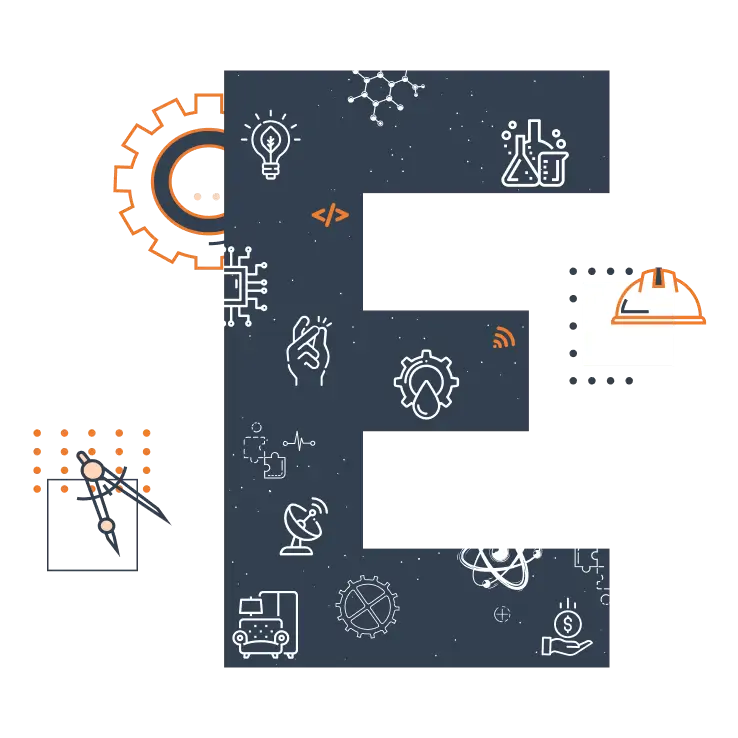Flare Package System Design and Application

Language
English
1121 Views
46 Enrollments
Share
Access anytime
76 Min
This course format through pre-recorded video. You can buy and watch it to learn at any time.
₹ 199
videos

₹ 199
Why do you enroll
Key topics covered
Course details
Course tags
Course content
Why do you enroll
Ignite your career in the oil and gas industry with expertise in Flare Package System Design and Application! By mastering this specialized skill, you'll become a sought-after professional in roles like Process Engineer, Facilities Engineer, or Project Manager, with opportunities for career advancement, higher earning potential, and global job prospects. With knowledge of flare system design and application, you'll ensure safety, compliance, and efficiency in oil and gas operations, making you a valuable asset to companies and opening doors to leadership roles and consulting opportunities.
Show more
Key topics covered
1. Introduction in Brief
2. Environmental Impacts
3. Flare System Components
4. Important Definitions
5. Flare Header
6. Flare Knockout Drum
7. Water Seal
8. Flare Stack
9. Flare Stack Components
9. Flare Gas Measurement
10. Flare Recovery
11. Maintenance & Trouble Shooting
Show more
Course Details
Flare System Design is very critical for Oil and Gas Industry
It is necessary to get rid of excess gas, and occasionally liquids from a facility. The safest way to do that is with the Flare System.
A Flare System is an arrangement of piping and specialised equipment that collects hydrocarbon releases from relief valves, blowdown valves, pressure control valves and manual vents and disposes of them by combustion at a remote and safe location
A gas flare, or flare stack, is a gas combustion device used in industrial plants such as petroleum refineries, chemical plants, natural gas processing plants, and at oil or gas production sites with oil wells, offshore oil and gas rigs/platforms and landfills
Onshore and Offshore Flare Systems Gas flaring systems are installed on onshore production fields, offshore platforms, on transport ships and in port facilities, at storage tank farms and along distribution pipelines. So what are the main differences between an onshore (refinery) Flare System and an offshore (platform) Flare System?
The equipment required for both onshore and offshore Flare Systems is essentially the same. However:
• Noise and radiation is more of a problem for an offshore facility due to the closer proximity of personnel
• More space availability for an onshore facility allows flare tips to be located away from the main process site
• Additional space onshore allows for the installation of spare flares if required and the potential use of Ground Flares
This Course will be very helpful to all Oil & Gas Professional to under Flare Package System

Show more
Course tags
Industry domains :
Engineering Disciplines :
Course content
1
Environmental Impact :
2
Flare types and its component :
3
Flare System Design :
FAQs on Flare Package System Design and Application
Having specific question ? Ask now
Trainer’s Feedback
165 course rating
39 ratings
AF
A Fabio Riyan
2 months ago
Very useful to budding engineers
VN
VIKAS_D_ NAYAK
2 months ago
usefull
UM
URK20AE1047 MOSES
3 months ago
very useful for beginners
PS
Prathamesh Shevale
3 months ago
Excellent course.
MM
Mostafa Mohamed Elsayed
3 months ago
Good
SS
SANJAY S 22CHR058
3 months ago
Good
FK
Farhan Khan
4 months ago
Good course
MS
Marthin Siagian
4 months ago
Good Course
AA
Ayan Adhikary
4 months ago
Great 👍
AH
ABDUL HASIB HASAN ZAYED
4 months ago
Very good.
TE
Team EveryEng
5 months ago
Good
PE
Process Engineering World
5 months ago
Good
PP
Prasenjit Pandit
5 months ago
Well narrated !!
TH
Tc.Mohd Hairul Jamaludin
5 months ago
Good
TH
Tc.Mohd Hairul Jamaludin
5 months ago
Good knowledge
AJ
Anuj Jagadale
5 months ago
well prepared content.
AJ
Anuj Jagadale
5 months ago
Highly appreciable content made.
TE
Team EveryEng
5 months ago
Good course
MR
Mohammed Rizvi Uvais
6 months ago
Well prepared presentation
MA
Mario Alberto Aguilar Herrera
7 months ago
Simple but excellent explaining
SC
SARTHAK CHAVAN
9 months ago
The lecture was quite good and interesting
HN
Harishankar Nagapuri
9 months ago
Excellent
SN
Shripad Nilakhe
10 months ago
Nice
NG
Nishanth G
10 months ago
Good Seminar
D2
DAVE 2D
10 months ago
Good session and explain as i expected
SK
Srinivasulu Killa
10 months ago
Good
bm
bhavin mehta
a year ago
Excellent course.
SA
Syed Aamir
a year ago
Good
SG
Sampath G
3 months ago
nicely explained
MY
MUHAMMAD YOUSUF KHAN
6 months ago
good good
PK
Prasanna Koduru
7 months ago
Good
SG
Sampath G
3 months ago
Should have discussed ddetails like 1.why density based solver. 2.why pressure boundary conditions. 3.How pressure values affect the working of nozzle etc
MF
Mustahid Fahim
3 months ago
Lectures are good but it's already available in the YouTube nptel lectures why should I watch here
KM
Khushal Mahajan
3 months ago
Why uploading NPTEL videos on your site ?
NA
Noor Alam
6 months ago
Good
YD
Yogesh Desai
a month ago
Useless
JK
Jahanzeb Khan
5 months ago
where are the other video
rk
recheal komugisa
7 months ago
Request for the video
TK
TANMAY KULAYE
10 months ago
Only one video is uploaded, rest of the videos are not there. 👎👎👎 Please upload other videos of Green Hydrogen.
Certificate of Mastery

Receive well recognised certificate that you can showcase on
Featured courses
Hazard Identification and Risk Assessmen...

How to prevent corrosion in the oil and ...

Application and use of "Green Hydrogen"

Career in EPC projects for Freshers

Career in EPC Cost Estimation

Learn MATLAB Programming

More Technical Courses From Team EveryEng
Pressure Vessel Essentials: Need of code...

How to prevent corrosion in the oil and ...

Application and use of "Green Hydrogen"

Gas Turbines with special emphasis on hy...

Career in EPC projects for Freshers

Career in EPC Cost Estimation

Bolt Torque Calculations using Dennis Mo...

Introduction to SAP and its role in the ...

More Articles From Team EveryEng
Davisson and Germer Experiment

Compton Scattering Effect

Coherent Source

Black Body Radiation

The engineering services is changing and...

What is first, YOU or YOUR COUNTRY?

Visionary Leaders make the nation great

Engineers need business acumen to be suc...

Collaboration is the first step of intel...

More Communities From Team EveryEng
Similar Content Learn:
Basic of CMS IntelliCAD and GD&T

Fundamentals of Quality, QMS & ISO-9001

Buffer Tank - Basic, Concept, Design, Ca...

Business Excellence through Quality, QMS...

Renewable Energy, Energy Storage Systems...

Similar Content Mentor:
All About Interviews

How to motivate & encourage team bonding...

Time Management essentials for Engineers...

COMMUNICATE TO WIN - The most important ...

Similar Content Seminar:
The Petrochemical and Refining Congress:...

The Oil and Gas Decarbonisation Congress...

OIL & GAS AUTOMATION AND DIGITALISATION ...

7th International Oil & Gas Chemistry, C...

Similar Content Blogs:
A brief mathematical overview of the for...

Reaching Net-Zero: The Power of Predicti...

PRC Europe 2025: Where Industry Leaders ...

Technical Basis for Impact Test Exemptio...

Aerodynamic physics of the Delta Wing

Seal of Hydraulic cylinder.

PRC Europe 2025: Italian Partners at the...

Similar Content Community:
Firefighting Design By Naga

Engineer's Corner

Cathodic protection

Similar Profile:

Vijay Sachdev
Consultant - Project & Pr...

Debojyoti sen
MD & CEO, SAURYAJYOTI REN...

Sabari Kuppuraj
Engineer

Dr Bhawani Singh Rathore
Renewable Energy Coach an...

Mir Abbas
Senior Engineer

HEXSPUR FOUNDATION
Mechanical Design Enginee...

Anup Kumar Dey
Owner of https://whatispi...

Please wait













































